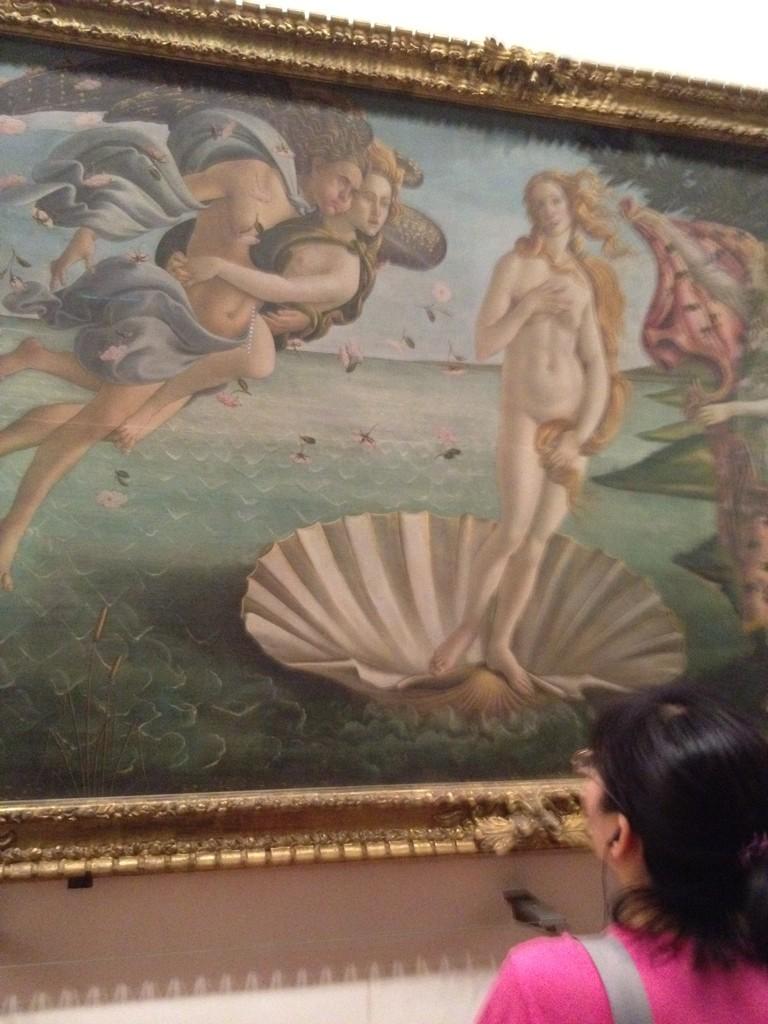 |
| Sandro Botticelli's Birth of Venus Picture taken by Professor S. Haynes |
Sandro
Botticelli's Birth of Venus was inspired by a Greek myth in
Angelo Poliziano's poem. In the painting, Venus is born of sea foam
and standing on a cockle shell. Zhephyrus, god of the west wind,
carries goddess Chloris and blows Venus to Cyprus, her sacred island.
On Cyprus, the nymph Pomona meets Venus with a brocaded mantle.
Nude figures were extremely rare in the Middle Ages, but the nude
depiction of Venus was accepted in the more accommodating culture of
the Renaissance, especially under the protection of the Medici.
Birth of Venus also has Neo-Platonic interpretations as an
allegory of divine love. Neo-Platonism attempted to reconcile pagan
ideas with Christian beliefs. Marsilio Ficino, an influential
humanist philosopher during the Renaissance, explained that when
humans see physical beauty, they will reflect on spiritual and divine
beauty. Unlike the advances in perspective demonstrated by many
Renaissance painters, Birth of Venus has a flat background.
Botticelli's linear style emphasizes his interest in two-dimensional
images.
No comments:
Post a Comment